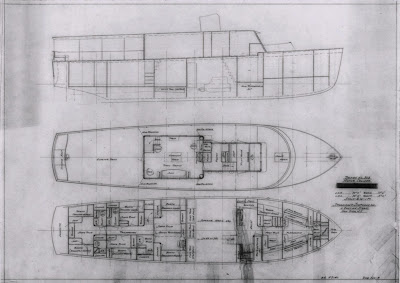We have made numerous postings about this very successful design, the S&S 34. She is design #1959. We have had a number of confused buyers or owners inquiring about this particular version, the Palmer Johnson 34. Let's set the record straight. The Palmer Johnson 34 brochure lists Nautor of Finland as the builder. That is completely false. Like the Swans that Palmer Johnson marketed and did not build themselves, these S&S 34s were marketed and sold by P.J. but built by Michael Winfield & Partners. Ltd. of England (later known as Aquafibre International). We know of at least 12 units sold through P.J.
The boats were identical to the boats sold abroad with the exception of an increased sail plan. The "I" dimension is 2'-6" taller than the English counterparts resulting in a sail area increase of 27 square feet. Here's the P.J. 34 sail plan.
And here's a copy of the original P.J. 34 brochure. Note the misleading credit to the builder on the cover page. Also note the LOA is listed as 33'-7". This was probably done for marketing reasons only and is not correct.
Principal Dimensions
LOA 33'-6"
LWL 24'-2"
Beam 10'-1"
Draft 5'-10"
LOA 33'-6"
LWL 24'-2"
Beam 10'-1"
Draft 5'-10"
Displacement 9,195 lbs
Ballast 4,800 lbs
Sail Area 484 sq ft
























































